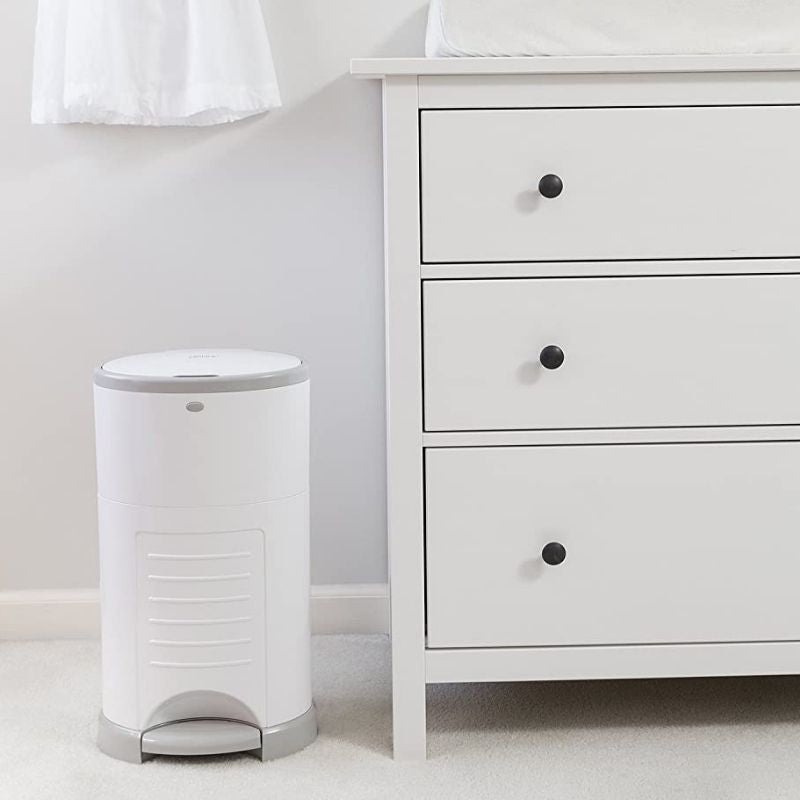Potty trainings are major milestones for both children and parents. It can be a frustrating time, but also a rewarding one. There are many resources available to help parents navigate this stage, including potty training sprays.
This article will focus on effective potty training methods and how to use them alongside potty training sprays, if you choose to use one.
Understanding Potty Training
Every child develops at their own pace. Some children show signs of potty training readiness as early as 18 months, while others may not be ready until closer to 3 years old. Signs of readiness include:
- Staying dry for longer stretches
- Showing interest in the toilet
- Telling you when they need a diaper change
Creating a Potty Training Plan
Here are some steps to consider when creating a potty training plan:
Pick a Time:
Choose a time when you can dedicate yourself to potty training without disruptions. This could be a weekend or during a school break.
Stock Up on Supplies:
Get a potty chair sized appropriately for your child. You may also want to invest in training pants.
Talk to Your Child:
Explain what potty training is and why it’s important. Use simple language and answer their questions honestly.
Positive Reinforcement:
Reward your child’s successes with praise, stickers, or a small toy. Avoid punishment for accidents.
Potty Training Methods
There are many different potty training methods. Here are a few of the most common:
The Bare Bottom Method:
This method involves letting your child go without diapers or training pants for short periods of time to help them feel wetness.
The Scheduled Method:
This method involves putting your child on the potty at regular intervals, regardless of whether they seem like they need to go.
The Sticker Chart Method:
This method uses a sticker chart to reward your child for using the potty.
Choosing a Potty Trainings Method
The best potty training method for your child will depend on their individual personality and temperament. Talk to your pediatrician for guidance on which method might be best for your child.
Potty Training Sprays
Potty training sprays are designed to attract children to the potty. They contain scents or pheromones that are supposed to mimic the smell of urine.
Here are some things to consider about potty training sprays:
Limited Effectiveness:
There is little scientific evidence to support the effectiveness of potty training sprays.
Focus on Positive Reinforcement:
Experts recommend focusing on positive reinforcement methods like praise and rewards.
Potential for Confusion:
The scent of the spray may confuse your child about where it’s appropriate to go potty.
Alternatives to Potty Training Sprays
Here are some alternatives to potty training sprays that you may find helpful:
- Colorful Potty Chairs: A brightly colored or decorated potty chair can be more appealing to your child.
- Potty Books: Reading books about potty training can help your child understand the process.
- Letting Your Child Choose Underwear: Allowing your child to pick out their own “big kid” underwear can increase their excitement about potty training.
Potty training takes time and patience. The most important thing is to be consistent and positive with your child.
Potty training sprays may be one tool you consider using, but they should not be the only strategy in your toolbox. Focus on positive reinforcement methods, creating a potty training routine, and using other tools like potty chairs and books.
Potty Trainings Success Stories
Many parents have successfully potty trained their children without using potty training sprays. Here are some tips gleaned from their experiences:
-
Positive Reinforcement: Rewarding your child for using the potty, no matter how small the accomplishment, is a powerful motivator. This positive reinforcement helps encourage them to continue using the potty.
-
Fun Potty Time: Singing songs, reading books, or playing games during potty time can make it a more enjoyable experience for your child. This can help create positive associations with using the potty.
Potty Trainings Apps and Resources
There are many resources available to help you on your potty training journey. Here are some to consider:
Potty Training Apps:
There are a variety of potty training apps available that can provide tips, trackers, and even songs to make potty time more fun.
Websites and Blogs:
Many websites and blogs offer potty training advice and support. Look for reputable sources with a history of providing accurate information.
Online Communities:
Online forums and communities can connect you with other parents who are potty training their children. This can be a great way to share experiences, ask questions, and get encouragement.
Potty training takes time and patience. The most important thing is to be consistent and positive with your child.
Focus on creating a positive potty training experience and using effective strategies like positive reinforcement, consistent routines, and making potty time fun. These methods are more likely to help your child potty train successfully in the long run.
Remember, there is no one-size-fits-all approach to potty training. If you have any concerns about your child’s progress, talk to your pediatrician for guidance.
Potty Trainings at Night
Potty training during the day is one hurdle, but nighttime training can feel like a whole new challenge. Here are some tips for night time potty training:
-
Limit Fluids Before Bed: Avoid giving your child large amounts of fluids close to bedtime.
-
Nighttime Potty Breaks: Consider taking your child to the potty once during the night, especially if they tend to wet the bed frequently.
-
Pull-Up Pants: Pull-up pants can offer some protection against leaks while your child sleeps.
-
Nighttime Rewards: If your child stays dry at night, consider offering a special reward sticker or small prize in the morning.
Regression and Troubleshooting
Accidents and setbacks are normal during potty training. Here are some tips for handling regression:
-
Stay Calm: Don’t get frustrated or punish your child for accidents.
-
Review Your Routine: Consider if there have been any changes in your child’s routine or environment that might be causing the regression.
-
Talk to Your Child: Briefly chat with your child and see if they’re feeling anxious or unsure about anything related to potty training.
-
Back to Basics: If necessary, take a few steps back in your potty training routine and gradually progress again.
Conclusion
Potty training takes time and patience. The most important thing is to be consistent and positive with your child.
Focus on creating a positive potty training experience and using effective strategies like positive reinforcement, consistent routines, and making potty time fun. These methods are more likely to help your child potty train successfully in the long run.
Remember, there is no one-size-fits-all approach to potty training. If you have any concerns about your child’s progress, talk to your pediatrician for guidance.







